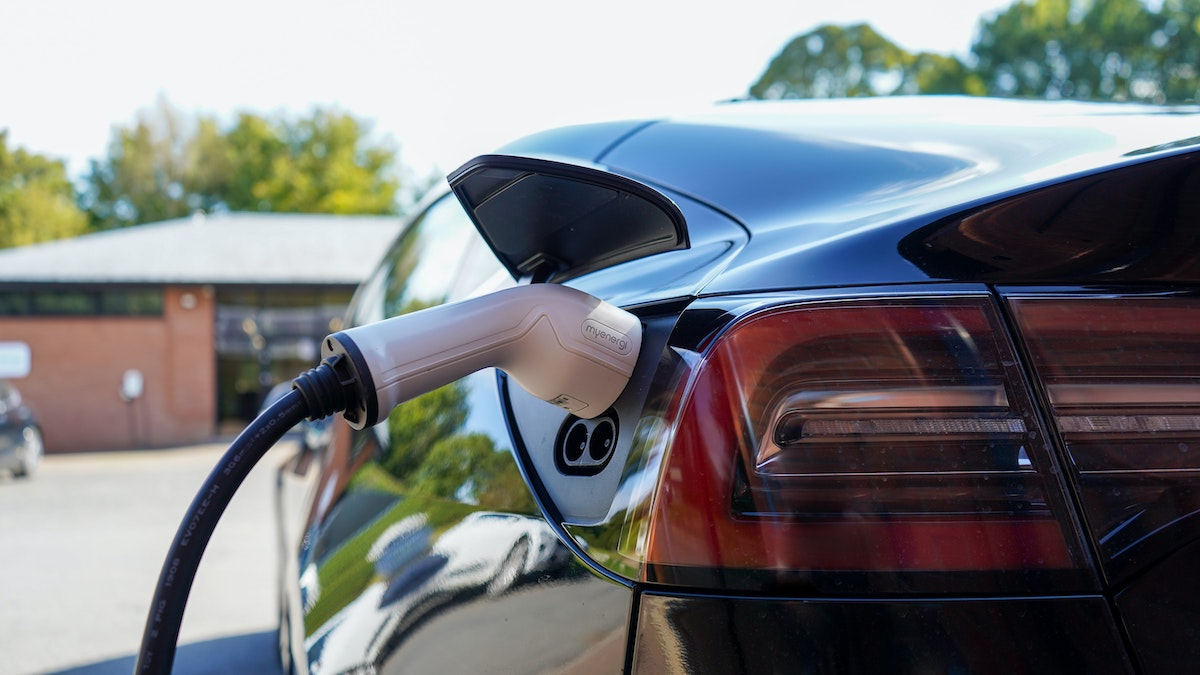Support strong Canadian climate journalism for 2025
To boost driver confidence in the province’s electric vehicle charging network, the Ontario government announced on Friday plans to build thousands of new charging stations in small and medium-sized communities.
The provincial government expects the $91-million investment to encourage residents to make the switch to EVs.
Experts underscore the urgency of expanding the charging infrastructure to achieve the province's zero emissions vehicle target by 2035. A broader charging infrastructure can significantly impact public perception, signalling that EVs are not just a niche technology but a practical and sustainable choice for the masses, said Sheldon Williamson, a professor at Ontario Tech University in the engineering and applied science faculty.
“Building more public charging stations is part of our government’s plan to be a global leader in the electric vehicle industry and provide more travel options for commuters,” said Transportation Minister Prabmeet Sarkaria in a statement shared online. “The EV ChargeON program will help get more electric vehicles on the road by building the infrastructure needed to support them, while securing a better future for Ontario.”
Starting immediately, applications are being accepted for the ChargeON program, which aims to establish publicly accessible charging stations in communities with populations under 170,000, along with Indigenous communities throughout Ontario, the statement reads. The program invites businesses, not-for-profit organizations, municipalities, Indigenous entities and various public sector organizations to participate.
“Our government is paving the way towards an electric future by building the infrastructure needed to support the electrification of transportation across Ontario,” said Energy Minister Todd Smith. “This program will deliver thousands of chargers across the province, which will be powered by our reliable, affordable and clean electricity grid, making EV travel for businesses and families easier than ever.”
Experts say expanding EV charging stations will help Ontario reach its goal.
"Charging stations mean increased convenience for EV owners, reducing "range anxiety" and making it easier for people to adopt EVs as their primary mode of transportation," said Williamson. “As charging infrastructure grows, it enables longer trips and makes EVs more practical for various purposes, including long-distance travel." Ontario also provides incentives for the installation of charging stations which will help lower the initial cost barrier and encourage adoption, the release states.
Charging an EV is often cheaper than refuelling a gas-powered vehicle, said Williamson. “Promoting this cost-saving aspect can be a significant incentive for car owners.”
Most importantly, if the electricity used for charging comes from renewable sources, it enhances the environmental benefits of EVs, he added.
Brian Kingston, president and CEO of the Canadian Vehicle Manufacturers’ Association, told Canada’s National Observer that the announcement is a step in the right direction towards broader EV adoption because a lack of convenient and accessible charging infrastructure is one of the biggest barriers preventing people from making the switch.
"For Canada to achieve 100 per cent EV sales by 2035, at least 442,000 public charging ports need to be made available. Leadership from the federal government, working with provinces like Ontario, is required to invest more in public charging and build infrastructure with more urgency,” he added.
In addition to community expansion, the investment in the EV ChargeON program will also allow for the construction of more EV chargers on government-owned land. This includes areas such as highway rest stops, carpool parking lots and popular tourist destinations, including Ontario Parks assets, as stated by the ministry.
The province states drivers can reduce their greenhouse gas emissions by 60 to 90 per cent when driving battery-electric vehicles or plug-in hybrid vehicles and utilizing Ontario's low-carbon electricity to power their vehicles.
According to the Ontario Ministry of Transportation, as of September 2023, the province had more than 135,000 registered EVs, encompassing both battery-electric vehicles (BEV) and plug-in hybrid electric vehicles (PHEV). The province's goal of having over one million EVs on Ontario's roads by 2030 is well underway, the statement reads.
As of September, Ontario boasted over 2,900 public charging stations with 7,900 ports, including 6,600 Level 2 ports and 1,300 Level 3 fast-charging ports, according to the ministry.
To achieve its goal of reaching net-zero emissions by 2050, the federal government has mandated that all newly sold light-duty vehicles must be zero-emission vehicles (ZEVs) by 2035. In Canada, transportation accounts for 25 per cent of the country’s greenhouse gas emissions.
This story was produced in partnership with Journalists for Human Rights for the Afghan Journalists-in-Residence program funded by the Meta Journalism Project.






Comments
We should remember that the Ford government came to power 5 years ago and scrapped plans to build out the charging infrastructure.
Welcome news, better way late than never.
But it is transparently a political makeover move to lull voters into believing the Ontario PC govt. gives a hoot about the environment.
Now please actually prove it by scrapping plans to build new and expand gas powered electricity plants.
Waiting ......